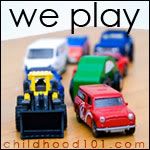




Inspired by our recent trips to the beach and shell collecting I wanted to build on the girl's interest and use their passion for these natural treasures. So, as I keep reminding them, maths isn't just about numbers it's about classification, organisation, grouping, comparison etc. First, we used our science observation skills (our 5 senses) and considered the appearance, size and texture - so we talked about ridges, rough, smooth, horizontal and vertical lines etc. Even 3 year old G was eager and involved. We used a very simple classification chart that all 3 girls loved using and we were able to classify all including the conch, scallop, triton and nautilus shells with nearly 100% accuracy. Since we are living in a place famous for its pearls (well at least here) and with an ancient tradition of pearl diving, we looked at You tube videos of how pearls are made and farmed. The girls are fascinated (as am I) about the humble origins of these precious and beautiful jewels. Since E had been snorkelling only a few weeks earlier and the girls had collected the shells themselves, this activity was even more interesting to them. They also enjoyed playing with the shells in water, in sand and with some little plastic sea creatures. We also tried to sketch our own shells, listened and tried to say the old "seashells, seashells by the seashore" tongue twister and explored the various mollusc creatures who live inside the shells. As part of our beach swimming day we also considered the power of salt and how it is easier to float in sea water than a chlorinated swimming pool. To demonstrate this, we experimented with an egg in water which begins to float when salt is added (about 6tsp). After this day of learning, E enthusisatically concluded that she would like to become a conchologist when she grows up. I had so much fun I think I might add this to my list too.


I love shells. And I really like how you've explained about the classification thing too. I have never thought of this way but of course, you are right!
ReplyDeleteThanks Kelly, I think sometimes we don't realise how enriching our "play" with our little ones is, but it can be useful to be more intentional in our discussions sometimes (without being too contrived). There is something so beautiful about shells and every one unique. Collecting shells always makes me feel like a child again too.
ReplyDeleteWhat a lot of learning borne of the humble seashell! Fantastic!
ReplyDeleteVery cool. My girls love collecting seashells at the beach :)
ReplyDeleteWhat busy explorations you have all been undertaking. We were just gifted a marvellous collection of shells and will be borrowing some of your ideas for our own exmplorations.
ReplyDeleteEnjoying playing with your sea shells Christie and Marita! Now we have proper names for different types of shells we can't wait to get back to the beach to search some more. We're now exploring mermaids and other sea creatures. (Makes a brief yet refreshing change from fairies :)
ReplyDeleteThank you so much for joing in with the Play Academy, it's great to swap ideas with you. What I really like about this idea is that it's all grown from the girls own interest in the shells. We love child-led learning :)
ReplyDelete